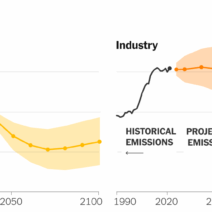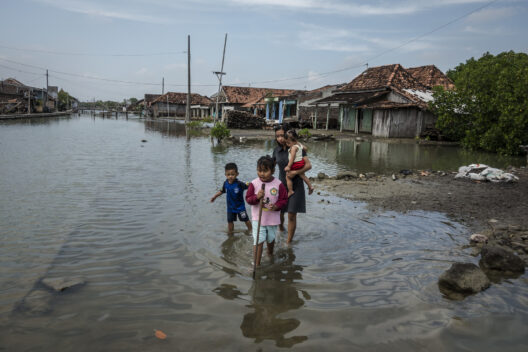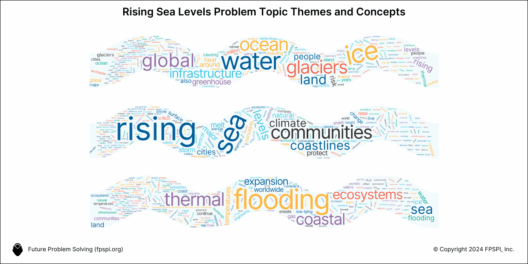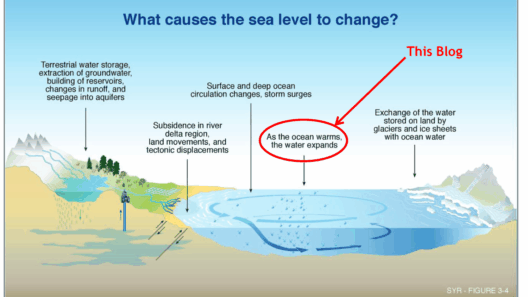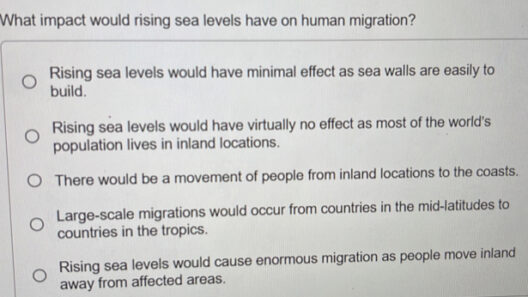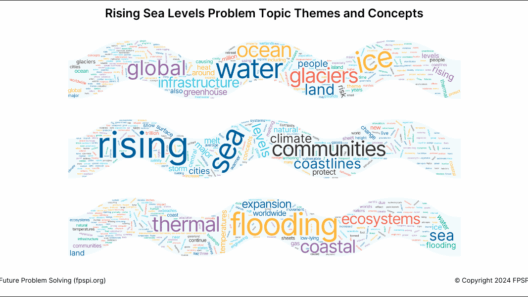The rising of sea levels is often perceived as a distant concern, something relegated to the pages of a futurist novel. Yet, when faced with the stark realities of climate change, the question arises: how does this phenomenon imperil human lives? As ocean waters encroach upon familiar landscapes, the ripple effects extend far beyond the simple inundation of properties. The gravitas of this situation beckons us to examine the precarious balances that exist between humanity and the encroaching tides.
Sea level rise, primarily driven by two interlinked factors—thermal expansion of seawater and melting ice sheets—constitutes a profound environmental challenge. The Intergovernmental Panel on Climate Change predicts that sea levels could rise dramatically over the coming decades. This scenario is not merely an abstract worry for coastal communities, urban planners, and governments; it represents an imminent challenge that requires urgent, coordinated action.
Communities at risk: The vulnerabilities of coastal areas
As sea levels rise, low-lying coastal regions bear the brunt of the impact. These areas, home to millions of people around the globe, face existential threats due to flooding, erosion, and increased salinity. The coastal cities of the world, from New Orleans to Dhaka, are poised on the precipice of unprecedented change.
Imagine your childhood beach, once a bustling hub of activity, now transformed into a barren stretch of waterlogged land. The loss of such cherished spaces is not trivial—it reflects a larger cultural and economic upheaval. Coastal regions depend heavily on tourism, though the implications extend well beyond recreational spaces. Fishing industries, vital for local economies, are also susceptible. As the waters rise and salinity increases, crucial fish stocks may dwindle, jeopardizing livelihoods that have sustained families for generations.
Moreover, infrastructure in these vulnerable regions—roads, bridges, and utilities—faces imminent jeopardy. As the seas rise, storm surges become more pronounced, leading to systemic failures that could leave communities isolated and deprived of essential services. This phenomenon is compounded by the greater frequency and intensity of storms, rendering traditional disaster recovery models obsolete. With infrastructure crumbling and economies faltering, where does that leave our coastal communities?
The psychological impact: A slow crawl into despair
While the physical impacts of rising sea levels are starkly visible, the psychological toll on affected populations deserves equal attention. The experience of suddenly becoming a “climate refugee” can create profound emotional and mental health challenges. For many, these are not merely statistics; they are human stories of loss and despair. The gradual inundation of homes leads to feelings of powerlessness, grief, and anxiety, often exacerbating existing mental health issues.
Consider those who have lived in a coastal community for decades, having cultivated friendships and memories within that space. The realization that their homes may soon succumb to rising tides creates an emotional anguish that cannot be quantified. Forced relocations become a reality, fracturing communities and displacing individuals from their familial support systems. The struggle that follows — not just losing a home but facing adaptation or resettlement — challenges the very fabric of social cohesion, leading to feelings of isolation and detachment.
Lessons in resilience: Adapting to a new reality
Amidst despair, there lies a kernel of hope: resilience. As sea levels rise, communities are compelled to innovate and adapt. Nature-based solutions, such as restoring mangroves and wetlands, can offer a bulwark against the encroaching seas while enhancing biodiversity. Empowering local communities to partake in these initiatives not only builds resilience but also fosters a sense of agency that can counterbalance feelings of despair.
Moreover, urban planning must evolve. Innovative engineering solutions, including elevated structures and improved drainage systems, can mitigate the immediate impacts of flooding. However, the challenge lies in securing funding and political will. This requires a collective effort—one where local governments, communities, and international organizations collaborate to forge more sustainable and adaptive futures.
Looking beyond adaptation, we must also consider mitigation strategies aimed at reducing overall emissions. As communities rally against the growing tides, we face critical questions: How do we prioritize climate action? What reforms in policy and practices are necessary to safeguard vulnerable populations? Advocating for systemic change, investors and policymakers must recognize that adapting to rising sea levels requires a multifaceted approach, one that encompasses not just hard infrastructure but social equity and ecological stewardship.
A collective challenge: The global stakes
As the world becomes more interdependent, the consequences of rising sea levels will reverberate beyond individual communities. Increased migration, resource scarcity, and geopolitical tensions are likely outcomes stemming from this crisis. How do we respond collectively? If rising waters are a harbinger of the upheaval facing humanity, it is imperative today to take action, learn from the past, and forge a path toward a more sustainable future.
What do we stand to lose if we ignore these rising tides? The answer stretches across generations, encompassing cultural heritage, livelihoods, and the very foundation of societies. Understanding the interconnectedness of these challenges is crucial as we look toward a future in which rising seas threaten our very existence.
As the conversation surrounding climate change shifts from theoretical to tangible, it is vital that we engage in proactive measures that address the risks posed by rising sea levels. By doing so, we affirm our commitment to preserving not only the environment but also the diverse human stories that interweave through our coastal landscapes.

